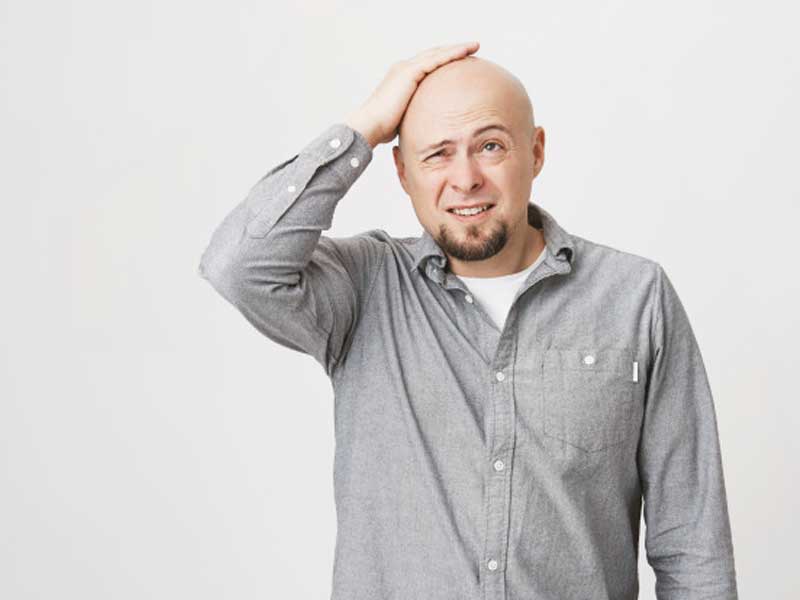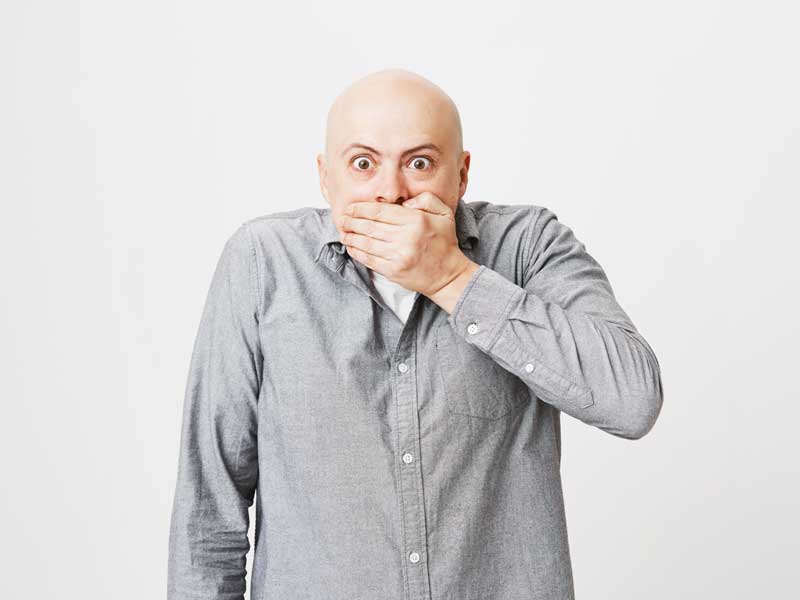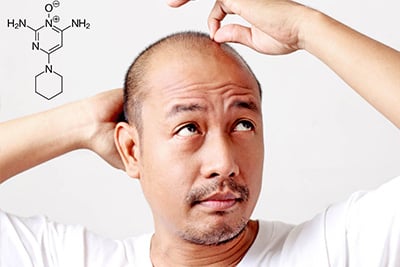Minoxidil and hair loss: what are its side effects?
Minoxidil side effects top searches (9571 impressions) worry users trying minoxidil for hair loss before hair transplant cost.
Does minoxidil work? Yes for 60% – but side effects of minoxidil include scalp irritation (70%), unwanted facial hair (women 5%), dizziness (3%).
Minoxidil for women side effects vs men: shedding phase, heart palpitations rare but serious. Minoxidil 5% side effects stronger than 2%.
Minoxidil long term side effects? Dependency + potential cancer concerns unproven. Discover what is minoxidil, real results, risks, and Clinicana FUE alternatives.
Minoxidil Overview
Minoxidil functions as a vasodilator medication primarily used topically to halt hair loss and promote regrowth in moderate alopecia cases.
By widening scalp blood vessels, it accelerates nutrient delivery to hair follicles for faster growth. Available worldwide under various brands in topical or tablet forms.
Minoxidil and Finasteride (Proscar, Propecia) represent the two main FDA-approved hair loss treatments: Minoxidil topical/tablets vs Finasteride oral. Hair implants provide the only permanent solution.
Minoxidil Hair Growth Mechanism
Minoxidil was initially developed in the late 1950s by the American Upjohn company to treat ulcers: it did not work in laboratory tests; however, it proved to be a powerful vasodilator.
So, it was released for first time in the 1970s as a new drug for hypertension. However, then an interesting side effect was discovered: people who used minoxidil were observed to have darkening of existing hair, as well as an unexpected hair growth.
Realising this side effect, Upjohn started to produce in 1988 a topical solution consisting of 2% minoxidil under the brand name of Rogaine/Regaine, and presented it to the world as a miraculous medicine.
Then, the medicine was started to be produced as a treatment against hair loss, consisting of minoxidil 5 percent (also known as minoxidil 5) for men; from 1991 on, it became also available for women as minoxidil 2%.
Studies conducted in animals have shown that minoxidil shortens telogen phase of hair and causes an early anagen phase.
It is believed to have the same effect on people, too. In addition, it is known that minoxidil can relieve the vascular muscles by opening muscle membranes, causing the effect of stimulating metabolism and decreasing blood pressure.
Similarly, there are some assumptions arguing that minoxidil opens potassium channels in hair follicles, and thus provides hair growth.
In addition, minoxidil is thought to play a role in proliferation of hair cells, in restriction of collagen synthesis, and in synthesis of prostaglandins, which are key to regulate blood pressure.
Minoxidil Effectiveness for Hair Loss
Does minoxidil work? As explained, minoxidil prevents hair loss and stimulates growth by increasing scalp blood flow.
It activates weak follicles and extends the anagen (growth) phase. Minoxidil became the first FDA-approved hair loss prevention medication.
Minoxidil normalizes miniaturized follicle diameter/depth, promoting hypertrophy rather than creating new follicles.
As a vasodilator, it enlarges veins and lowers blood pressure. Its benefits proved so evident pre-FDA approval that 1980s physicians prescribed minoxidil off-label for balding patients.
Minoxidil Results in Preventing Hair Loss
Minoxidil studies have focused on inherited baldness (pattern hair loss), the most common type of hair loss.
In male-pattern hair loss, the period between anagen and telogen phases of hair becomes shorter, and therefore hair follicles get smaller.
Pattern hair loss is more common in men, but it can be seen also in women; in fact, that’s the reason why female hair transplants in Turkey are becoming more and more popular.
In tests made with minoxidil for men and women suffering from this type of hair loss, both experienced hair growth, an increase in the number of hairs, and more hair density.
Since this situation occurs within 12-16 weeks from the date of the first use of minoxidil, we can say that the results of this medication become evident very fast.
This rapid effect can be explained by the reverse of the growing process of shortened hair follicles. Moreover, since existing hair gets out from telogen phase and enters in anagen phase again, hair becomes stronger and thicker, and falling out of hair slows down.
After a continuous use of minoxidil, people can see soon the effects in hair: firstly, on the top of the head, and then in the front and sides.
The maximum effect while using minoxidil is seen between 6 months and 2 years; after this time, the effect slows down. The compound is administered in concentrations of 2% (minoxidil 2) in the case of women, or as minoxidil 5 for men (minoxidil 5%), normally topically.
In cases of severe hair loss, minoxidil 10 can be prescribed, having been proved more effective than minoxidil 5: however, the side effects of using such high concentrations of minoxidil are still being studied.
Minoxidil Side Effects Overview
Minoxidil side effects primarily affect the skin at the application site, as it’s mainly topical – a key advantage over Finasteride, which causes systemic effects. Key side effects of minoxidil include:
- Itching, irritation and stinging: Caused by alcohol in minoxidil lotion
- Dehydration: Alcohol-related drying effect
- Redness: Vasodilation triggers scalp flushing
- Shedding: Normal 2-3 months post-start; regenerated hair sheds as stronger growth replaces it
- Hirsutism: Minoxidil tablets for hair loss stimulate body-wide hair (face, arms, chest)
- Allergies: Consult doctor to prevent reactions
Minoxidil contraindicated during pregnancy/lactation due to fetal risks. Unlike myths, minoxidil does not cause sexual impotence – no studies link it to erectile dysfunction. Finasteride, however, reduces libido and causes impotence.
Minoxidil Hair Loss Prevention Limitations
Minoxidil represents a significant alopecia treatment advance but isn’t miraculous. Best minoxidil results occur in early/light hair loss stages, proving especially effective for those under 40 with recent onset.
However, it doesn’t work for everyone: effectiveness ranges 15%-60% based on multiple factors.
Minoxidil’s main disadvantage: lifetime daily treatment required (typically 2x/day). Discontinuation first halts growth, then causes complete new hair loss within 3-4 months.
This drives FUE hair transplant popularity for alopecia patients. FUE offers the only permanent solution: painless local anesthesia, scarless, using patient’s own follicles (no rejection/medication needed).
Summary
- Consider minoxidil for mild loss temporarily.
- Advanced alopecia demands definitive hair transplant.
Clinicana – premier hair transplant clinic – specializes in all treatments. Request free consultation + no-obligation estimate. Save your hair today!
FAQ
Is hair loss common with minoxidil?
Yes, temporary shedding affects 50-70% of users in first 2-8 weeks – normal sign weaker hairs make way for stronger growth. Continues 1-3 months max.
Will you lose hair after stopping minoxidil?
Yes, new minoxidil-grown hair sheds within 3-4 months of stopping. Lifetime use required or results reverse completely.
How long does minoxidil shedding last?
Shedding phase typically 2-8 weeks, rarely up to 3 months. Stronger hair regrows after – continue treatment.
Can minoxidil regrow lost hairs?
Minoxidil revives miniaturized follicles (60% effectiveness) but cannot regrow completely dead follicles. Works best early-stage loss.

Yes, poor scalp circulation can directly cause hair loss. When blood flow to hair follicles is restricted, they’re deprived of oxygen and essential nutrients (iron, zinc, vitamins), which triggers premature hair shedding and follicle miniaturization. This condition is gradual but preventable—and in many cases, reversible. But before jumping to conclusions, it’s important to understand how much poor circulation […]

Do you have an irrational fear of becoming bald—or even fear of bald people? If so, you’re not alone. A surprisingly large number of people experience this anxiety, and it even has a clinical name: phalacrophobia. Phalacrophobia is more than just worry about hair loss. It’s an irrational, uncontrollable fear that can trigger anxiety, panic attacks, and avoidance behaviors. […]

Beard dandruff is more common than many people think. While dandruff is present on an otherwise well-groomed beard. The good news is that beard dandruff usually has a solution—once you understand the real cause. In many cases, it’s related to skin conditions like seborrheic dermatitis, product buildup, dryness, or using the wrong cleanser for the face. […]











